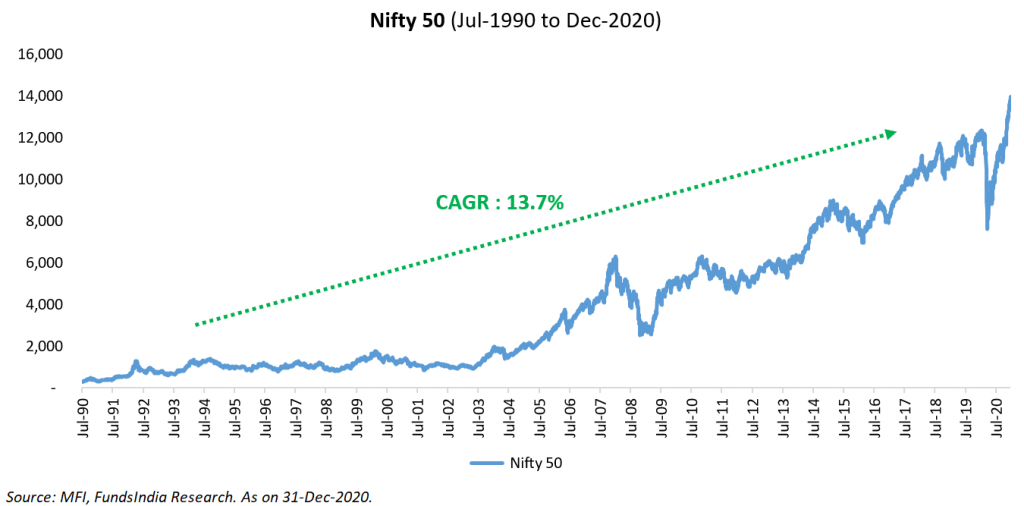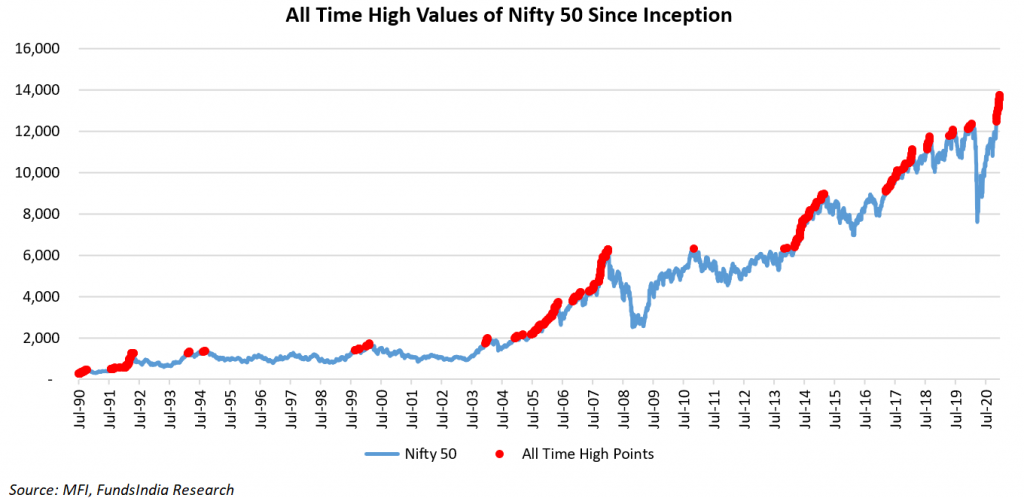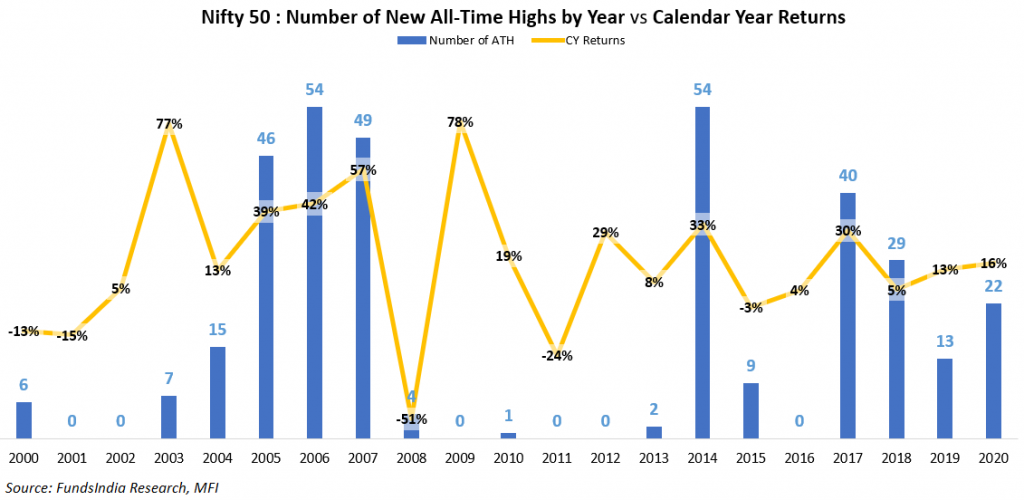
“Buy Low, Sell High”, is the general market wisdom.
Going by the same logic, when markets reach all-time highs, should you reduce your equity allocation or stay invested?
Here is how we approach this often asked question.
Perspective No 1: All-time highs are a normal part of long-term equity investing

For any asset class that is expected to grow over the long run, it is inevitable that there will be several all-time highs during the journey as seen below.

Perspective No 2: All-time highs don’t mean that markets will crash immediately
For the last 20 years, we checked for all the periods where the Nifty 50 TRI index had hit an “all-time high” level. We then checked for the 1-year, 3-year and 5-year returns following those “all-time high” levels.

The Nifty 50 TRI gave positive returns 73% of the time on a 1-year basis, 87% of the time on a 3-year basis and 100% of the time on a 5-year basis, if we had invested during an all-time-high.
The average 1Y returns when invested in Nifty 50 TRI during an all-time-high is ~13%! (for active funds with 20Y+ existence – HDFC Flexi cap fund and Franklin Flexicap fund – the average 1Y returns was even higher at 17% and 20%).
In fact, almost half the instances were followed by 1-year returns of more than 15%. 6 out of 10 times – the 1Y returns exceeded 12%.
This clearly shows that “all-time highs” automatically don’t imply a market fall and in fact, the majority of times, market returns have been strong post an all-time high.
The recent rally of 30%+ from the previous all-time high of 12000 levels in Nifty 50 is a good reminder of this.
The below chart shows the number of times Nifty made new highs each year vs the returns for the entire year.

As can be seen from the chart above, years with more all-time highs have often ended up with good returns for the calendar year.
Takeaway
All time highs in isolation do not predict market falls and historically investing at all time highs has led to good short term return outcomes majority of the times.
While there’s no way of knowing what lies ahead in the near term, history shows us that equity markets tend to move higher over the long term. New highs are a normal occurrence and don’t necessarily warn of an impending correction. They may in fact signal that further growth lies ahead.
So when should you actually worry?
Irrespective of whether the markets are at all-time high or not, if the following conditions occur together, then you should worry about higher risks in the markets and evaluate your equity exposure –
- Very Expensive Valuations (tracked via FundsIndia Valuemeter)
- Top of the Earnings Cycle
- Euphoric Sentiments in the Market (Strong Inflows from FII & DIIs, large no of IPOs, leverage, new investor participation, very high past returns, new themes collecting large money, momentum etc)
We continuously track the above via our Three Signal Framework and Bubble Zone Indicator (which tracks 35+ indicators). You can read our entire approach explained in detail here.
At the current juncture, our in-house Three Signal Model indicates that markets are currently in:
Expensive Valuation + Bottom of Earnings Cycle + Mixed Sentiments indicating NEUTRAL ALLOCATION to Equities – i.e., continue to invest as per long-term equity allocation. Eg: If your Asset allocation is Equity 50%: Debt 50% – stick to the 50% exposure levels to equities and do not increase or lower your exposure.
This is an evolving indicator and for a regular monthly update on our evaluation of the equity markets via our Three Signal Approach and Bubble Zone Indicator please get in touch with your relationship manager.






